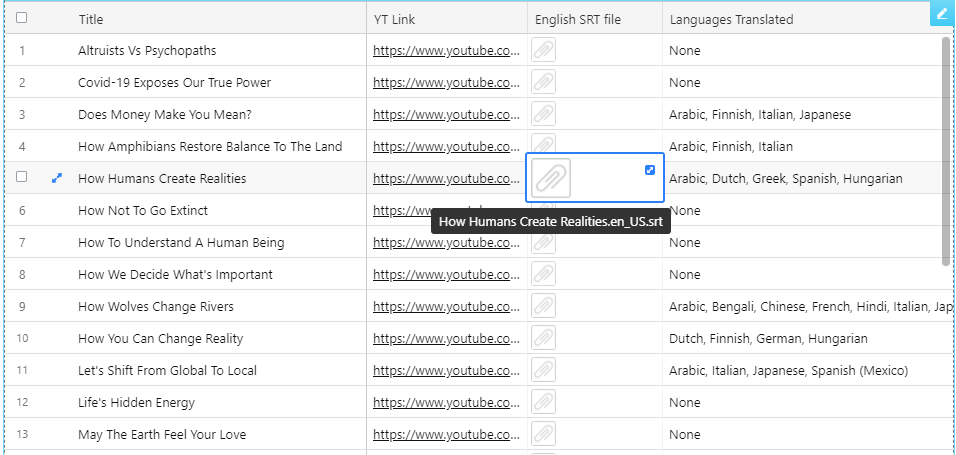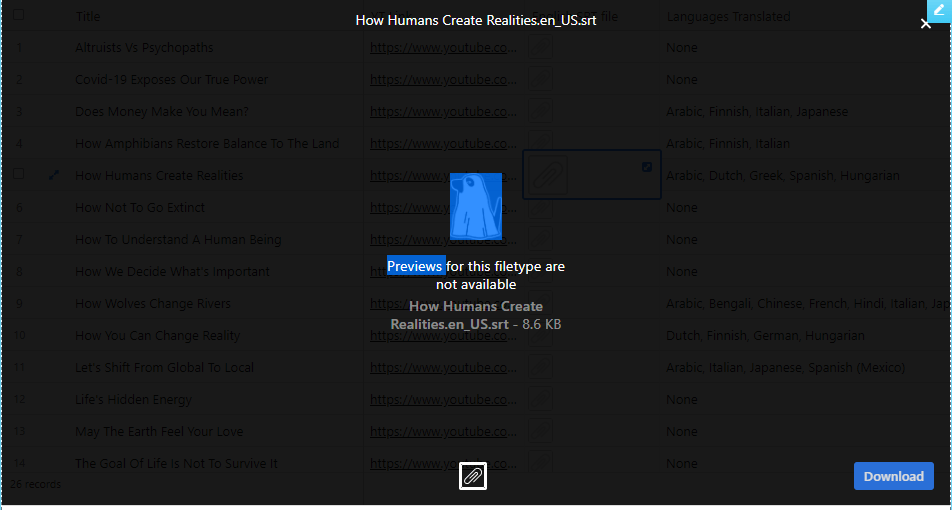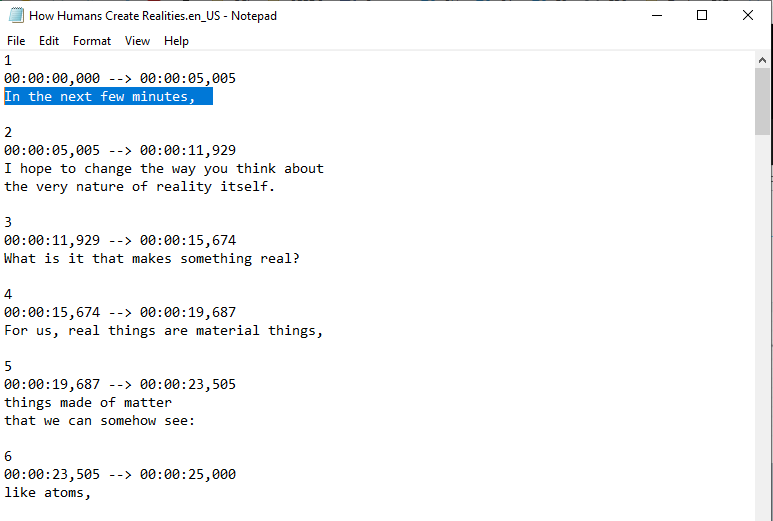
Our client is one of the most prominent therapists in dealing with wounds stemming from the maternal bond. We wrote the script and produced a video that could help introduce the concept of Mother Hunger to audiences around the world.

After the Civil War battle of Shiloh, Tennessee, in 1862, 16,000 injured soldiers were strewn across the battlefield. So great were their numbers that neither army was able to retrieve and treat them quickly. Thousands were left lying in the mud, in some cases for two days and two nights. Many died from their wounds and the consequent infections.
But at night, some of the injured men noticed a strange blue glow emanating from their wounds. The light could be seen from a distance. Field surgeons observed that the soldiers whose wounds emitted this blue light healed more quickly and had a higher rate of survival than those who didn’t. They called it the Angel’s Glow.
What was it? At the time, people believed it was divine intervention: these men must have been touched by the healing hands of angels.
It took almost 140 years for a scientific explanation to emerge…this is the story of the science behind the Angel’s Glow.
The Angel’s Glow is a story from George Monbiot’s new book, Regenesis.
For the first time since the Neolithic, we have the opportunity to transform not only our food system but our entire relationship to the living world.
In this brilliant, bracingly original new book, Regenesis, we find a breathtaking vision of a new future for food and for humanity. Drawing on astonishing advances in soil ecology, George Monbiot reveals how our changing understanding of the world beneath our feet could allow us to grow more food with less farming. He meets the people who are unlocking these methods, from the fruit and vegetable grower revolutionizing our understanding of fertility; through breeders of perennial grains, liberating the land from ploughs and poisons; to the scientists pioneering new ways to grow protein and fat. Together, they show how the tiniest life forms could help us make peace with the planet, restore its living systems, and replace the age of extinction with an age of regenesis.
After the Civil War battle of Shiloh, Tennessee, in 1862, 16,000 injured soldiers were strewn across the battlefield. So great were their numbers that neither army was able to retrieve and treat them quickly. Thousands were left lying in the mud, in some cases for two days and two nights. Many died from their wounds and the consequent infections.
But at night, some of the injured men noticed a strange blue glow emanating from their wounds. The light could be seen from a distance. Field surgeons observed that the soldiers whose wounds emitted this blue light healed more quickly and had a higher rate of survival than those who didn’t. They called it the Angel’s Glow.
What was it? At the time, people believed it was divine intervention: these men must have been touched by the healing hands of angels. It took almost 140 years for a scientific explanation to emerge.
A 17-year-old high school student called William Martin, acting on a hunch, persuaded his friend Jonathan Curtis to help him investigate. Their paper, which won a national science prize, argued that the soldiers had been saved by nematodes. Nematodes are tiny white worms, invisible to the naked eye, that live in the soil. But how could they have saved the lives of the soldiers lying in the mud at Shiloh?
To see what might have happened, first we need to understand something that at first sight seems just as miraculous. Plants can talk. In fact, their survival depends on talking. Talking to other creatures in the soil. Plants talk with chemicals. They use extremely complex chemical compounds to communicate with other species. Mostly, they talk to bacteria.
Soil is full of bacteria. In fact, to a large extent, soil is built by bacteria. They use glue made from carbon to stick together tiny particles, building the catacombs that trap air and water. These structures then become the building blocks for bigger labyrinths, created by the animals that also live in the ground. Soil, that we once saw as nothing but a lumpen mass, turns out to be a biological structure, like a wasps’ nest or a beaver’s dam, but much more complex.
Most bacteria, most of the time, exist in limbo. But when a plant root pushes into a lump of soil, it starts to talk to them. It sends the chemical signals that release them from their torpor. The plant doesn’t want to wake up all the bacteria in the soil. Some of them will harm it. So it speaks a language that can be heard only by its friends. A language that’s specific and precise. The plant’s chemical messages trigger an explosion of activity. As the bacteria responding to its call wake up, the plant feeds them with sugar. They proliferate around the root to form some of the densest microbial communities on Earth. The bacteria unlock from the soil the nutrients the plant needs, produce hormones and other chemicals that help the plant to grow, and can fire up the plant’s immune system, helping it to fight off disease.
Take a step back and you will see something fascinating. The relationship between plants and the bacteria in the soil looks very much like the relationship between humans and the bacteria in our guts. The soil surrounding a plant’s roots, that we call the rhizosphere, is, in effect, the plant’s external gut.
But what has all this to do with the soldiers lying in the mud at Shiloh?
Well, plants also cry out for help from larger creatures. When underground caterpillars attack a plant’s roots, it can start talking in a different language altogether: a language understood not by bacteria, but by those tiny white worms called nematodes. The nematodes responding to its call use their sharp beaks to pierce the caterpillar’s skin. Then they wriggle into the body cavity and regurgitate the luminous bacteria, called Photorhabdus luminescens, that live in their guts.
These luminous bacteria release an insecticide that kills the caterpillar. They also produce antibiotics that wipe out the microbes that might compete with them. Then they digest the caterpillar from the inside, and the nematodes eat the proliferating luminous bacteria. When they’ve finished, the nematodes burst from the caterpillar’s corpse into the soil, seeking new prey. These prey can be easy to find, because the luminous bacteria produce an enzyme called luciferase that makes the caterpillars they infect glow blue. The glow seems to attract other caterpillars that can then be attacked.
William Martin and Jonathan Curtis argued that the soil contaminating the soldiers’ wounds must have contained these predatory nematodes. Mistaking the soldiers’ flesh for caterpillars, the nematodes regurgitated their bacteria. The antibiotics the bacteria produced destroyed the other pathogens infecting the wounds. Because the luminous bacteria have evolved to infect insects, whose body temperature is lower than that of humans, the students speculated that only soldiers with hypothermia could have been saved by them. Which could be why some glowed and others didn’t.
The soil, on which we rely for our survival, is scarcely known to us. But it turns out to be an ecosystem as diverse and complex as a rainforest or a coral reef. An ecosystem built by the creatures that inhabit it. An ecosystem whose wonders we are only beginning to understand.

“Chris and Dawn are brilliant, insightful creators and storytellers. They understand the use and power of narrative better than almost anyone I’ve come across, and this, in our challenging times, is an indispensable talent. In one video after another, they have transformed my words into a visual story that resonates with millions of people. The viewing figures are astonishing, and they are all down to their amazing ability to capture mood and moment with imagery and music. I could not recommend them highly enough.”
Science:
Music:
“Wehre Direh (Reprise)” – Judah Earl
“Unbreakable Glass” – Lights & Motion
Find out how video storytelling can help your audience resonate with your sustainable idea, research, campaign or product.



We never send solicitations or junk mail and we never give your address to anyone else.


